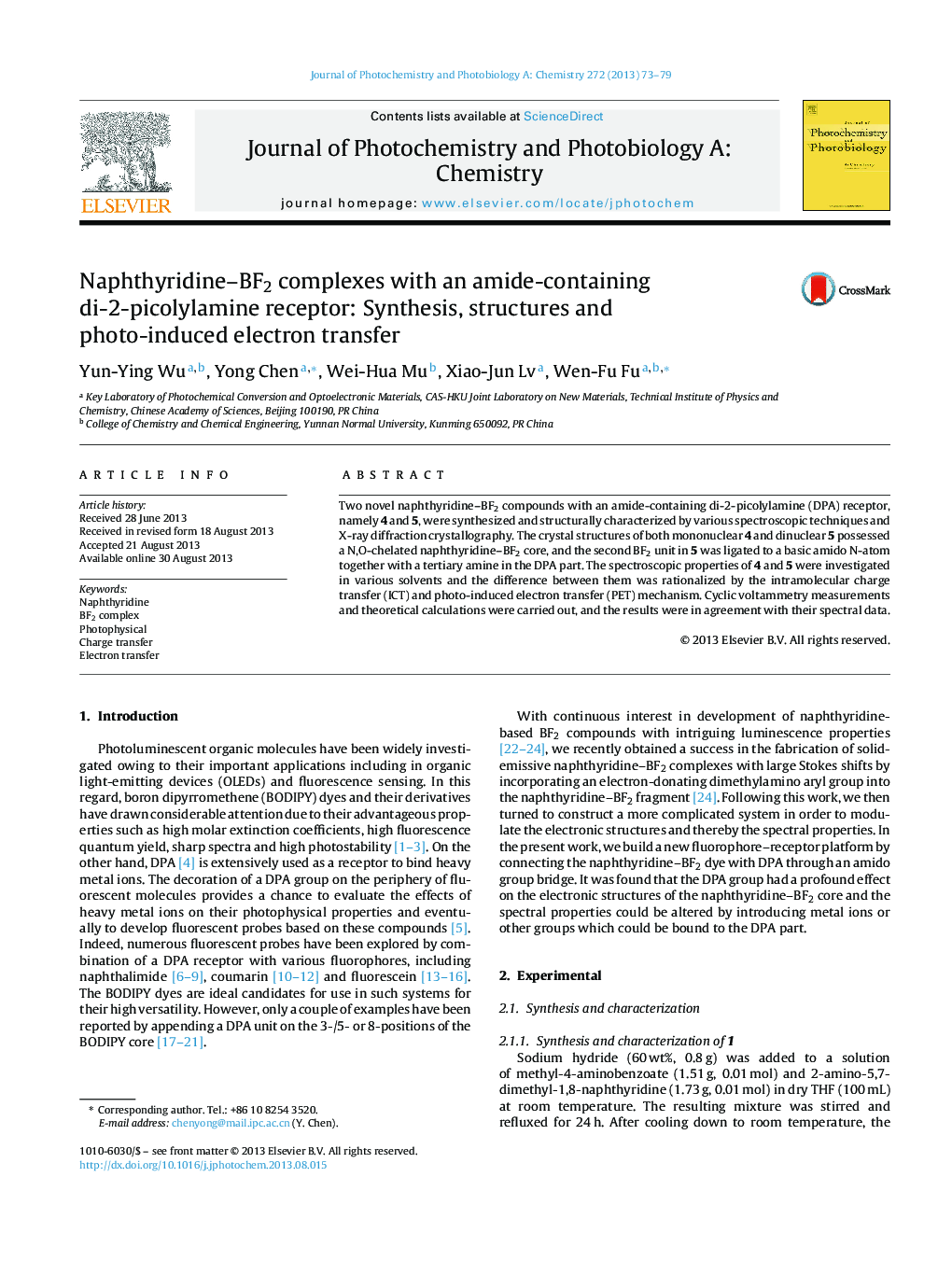| Article ID | Journal | Published Year | Pages | File Type |
|---|---|---|---|---|
| 26817 | Journal of Photochemistry and Photobiology A: Chemistry | 2013 | 7 Pages |
•Two novel naphthyridine–BF2 compounds with an amide-containing di-2-picolylamine (DPA) receptor were synthesized.•The photophysical properties were elucidated which are in line with the results of CV measurements and DFT calculations.•Fluorescence increase was realized by coordination of DPA with a second BF2 unit or metal ions.
Two novel naphthyridine–BF2 compounds with an amide-containing di-2-picolylamine (DPA) receptor, namely 4 and 5, were synthesized and structurally characterized by various spectroscopic techniques and X-ray diffraction crystallography. The crystal structures of both mononuclear 4 and dinuclear 5 possessed a N,O-chelated naphthyridine–BF2 core, and the second BF2 unit in 5 was ligated to a basic amido N-atom together with a tertiary amine in the DPA part. The spectroscopic properties of 4 and 5 were investigated in various solvents and the difference between them was rationalized by the intramolecular charge transfer (ICT) and photo-induced electron transfer (PET) mechanism. Cyclic voltammetry measurements and theoretical calculations were carried out, and the results were in agreement with their spectral data.
Graphical abstractTwo novel naphthyridine−BF2 compounds with an amide-containing di-2-picolylamine receptor were synthesized and structurally characterized, which displayed various fluorescent properties due to photo-induced electron transfer as evidenced by both cyclic voltammetry measures and theoretical calculations.Figure optionsDownload full-size imageDownload as PowerPoint slide
